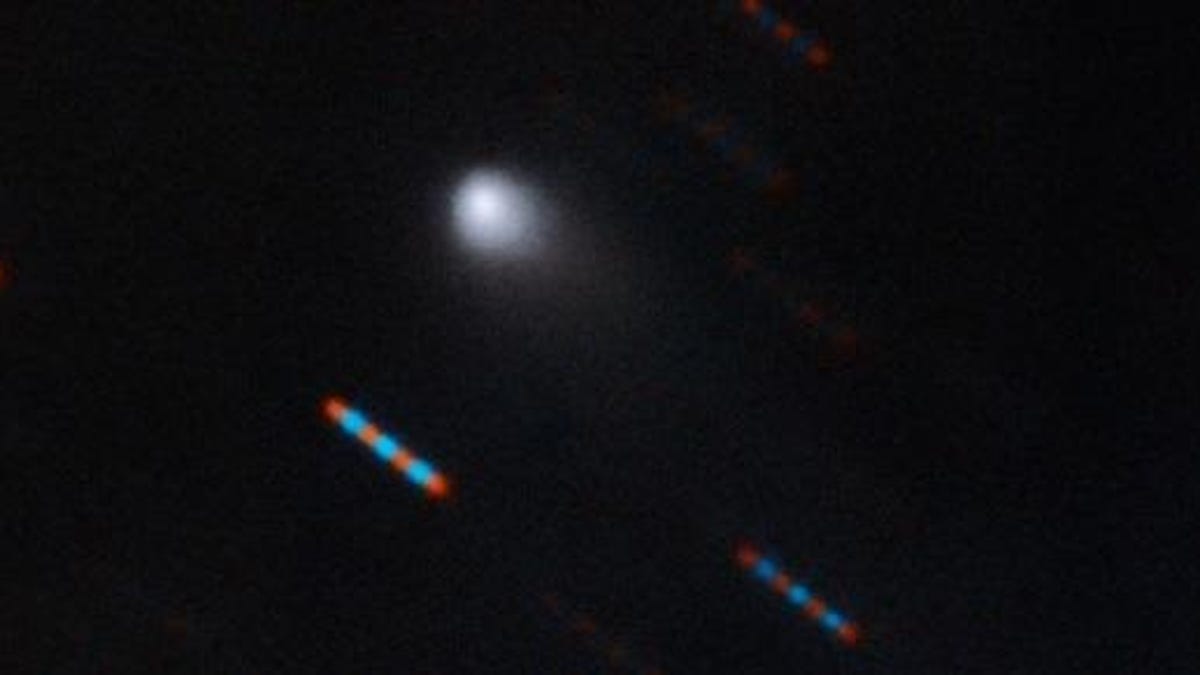Interstellar comet, visiting from deep space, is stranger than we thought
Comet Borisov is visiting our solar system from parts unknown -- and it's unlike the comets we've seen in our own cosmic neighborhood.

2I/Borisov is the first interstellar comet we have ever seen.
As far as tourist destinations go, our solar system appears to be fairly low on the universe's list of best places to visit: Astronomers have only ever detected two interstellar visitors passing through our neighborhood. Even though our visitor count remains low, those two wanderers have given us a glimpse of the truly unusual vagabonds traversing the cosmos. The first -- 'Oumuamua -- was so weird scientists suggested it may even be an alien probe.
The second visitor, rogue comet 2I/Borisov, seemed pretty ordinary by comparison -- but new analysis shows our second interstellar visitor is pretty odd, too.
Two studies, published in the journal Nature Astronomy on Monday, examined Borisov using the space-based Hubble Telescope and the ground-based Atacama Large Millimeter/submillimeter Array (ALMA) in northern Chile. Astronomers were particularly fortunate with Borisov observations because, unlike 'Oumuamua, it was spotted in the customs line on the way in to our solar system, giving them a chance to observe it.
Hubble and ALMA were pointed at Borisov in December and January as it moved through our corner of space just outside the orbit of Mars. As it got closer to the sun, Borisov warmed up, causing it to expel some of the gases trapped inside. This gave researchers with Hubble and ALMA a chance to study different wavelengths of light emitted by the interstellar visitor and determine what gases it contains.
"This is the first time we've ever looked inside a comet from outside our solar system," said Martin Cordiner, an astrochemist with NASA's Goddard Flight Center and first author on the paper, in a release. "It is dramatically different from most other comets we've seen before."
Both studies show Borisov is extremely rich in carbon monoxide. It's not strange to find carbon monoxide in a comet, but the levels seen by Hubble and ALMA are off the charts, measuring about three times higher than comets from our home solar system. Because carbon monoxide only freezes at extremely cold temperatures, the research teams suggest it likely formed at the dark, outer edges of a distant star system before being flung toward us.
Borisov's story is kind of grim, even for a space rock. In the paper by Dennis Bodewits, professor of physics at Auburn University, and colleagues, the authors speculate that Borisov may have begun its life around an M-type star, one of the most common types of stars in our neck of the woods. The team suggests a giant planet orbiting such a star may have kicked Borisov loose, launching it into the depths of space. From there, it wandered, alone and incredibly cold, for millions of years until physics and fate brought it close enough to our sun for it to heat up and burst to life.
As it streams through our region of space now, Borisov appears to be crumbling like a cookie dunked in tea. Recent images of Borisov showed it cracking apart and a small fragment being ejected into space. A more recent notice in The Astronomer's Telegram shows the secondary fragment is no longer visible. Unfortunately, the coronavirus pandemic has prevented a more concerted look at the tourist because many of the major observatories that can still view the comet here on Earth have closed.
Hubble should be able to track Borisov into 2021, but ground-based telescopes like ALMA will likely lose sight of it in the coming months. While the small window of opportunity to learn more about Borisov is closing, there's no doubt our solar system will play host to a third rogue tourist some time in the near future -- here's hoping it's just as weird.

